Three Day
RESTORATION AGRICULTURE WORKSHOP
with Mark Shepard
April 27-29, 2018
Ithaca, NY
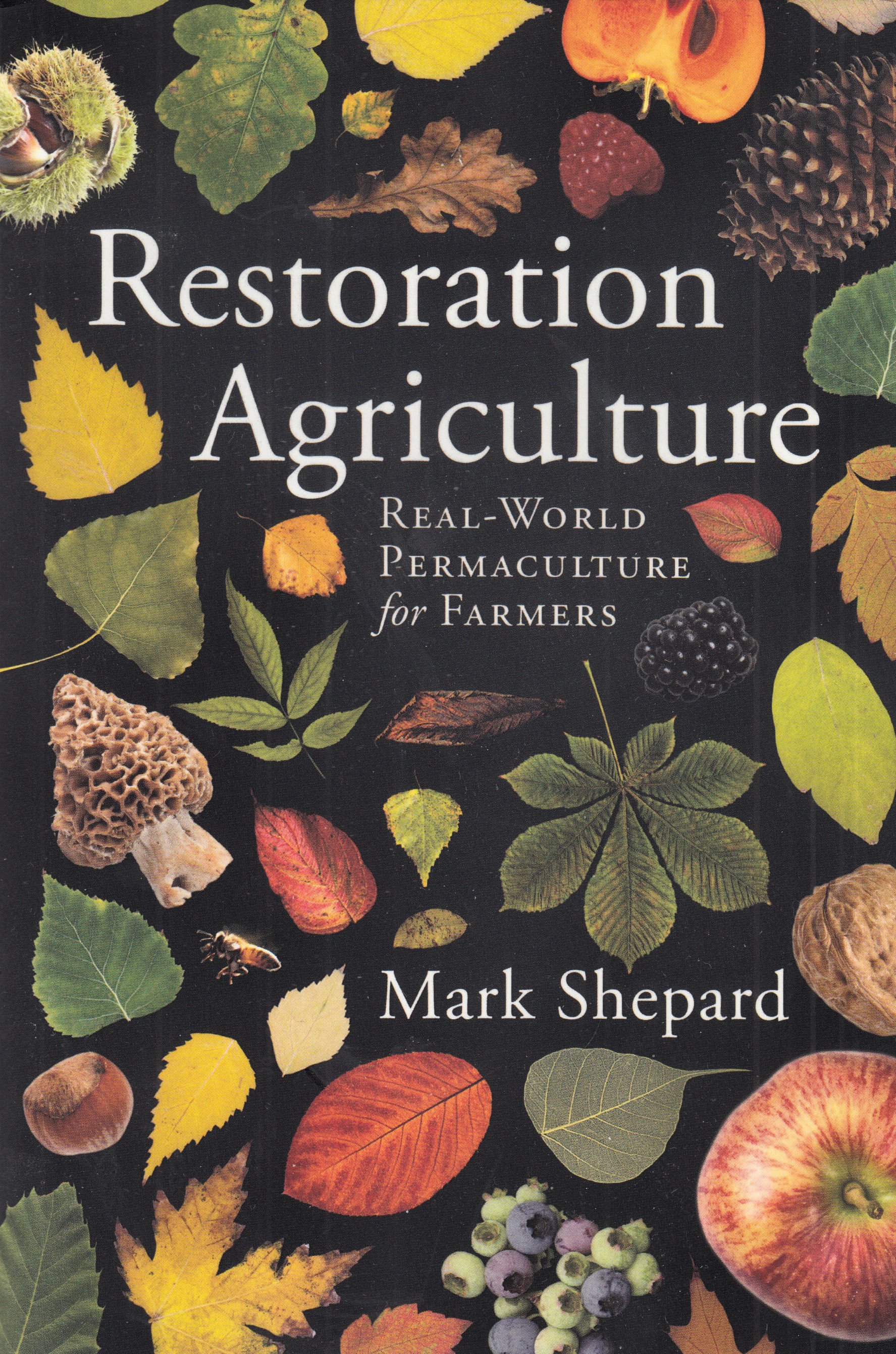
“Restoration agriculture is the process of creating a viable ecological system based on natural patterns and relationships, that is perennial, and that produces staple foods, fuels, medicines, and fibers for human beings while providing an increasing number of available niches for animals both wild and domestic.”
Benefits of Restoration Agriculture
One outcome of restoration agriculture is a silvopasture system with diversity of plant and animal life that harvests optimal amount of solar energy per acre to produce staple crops. Perennial plants are selected to mimic natural ecosystems such as the savanna, the most highly productive biome on earth.
A restoration agriculture system of perennials in multi-story arrangement can sequester up to six times more carbon than annual agriculture.
The PROJECT DRAWDOWN strategies that restoration agriculture employs:
#9 SILVOPASTURE
#11 REGENERATIVE AGRICULTURE
#17 TREE INTERCROPPING
#23 FARMLAND RESTORATION
#28 MULTISTRATA AGROFORESTRY
With restoration agriculture, the water holding capacity of soil is increased through cover cropping, earthworks, and keyline plowing, contributing mightily to the restoration of the hydrological cycle.
According to Walter Jehne, it is the water cycle that regulates the climate. The water cycle drives 95% of the global heat dynamics while carbon accounts for only 4%. It is far too late to address the climate change issue through CO2 alone, he says, but we CAN reverse global warming by restoring the hydrological cycle. Watch Jehne in Restoring Water Cycles to Naturally Cool Climates and Reverse Global Warming.
Site fertility increases dramatically with minimal inputs resulting in a system that is ecologically sound and economically viable.
What you will learn─
How to make your land more resilient in times of flood and drought
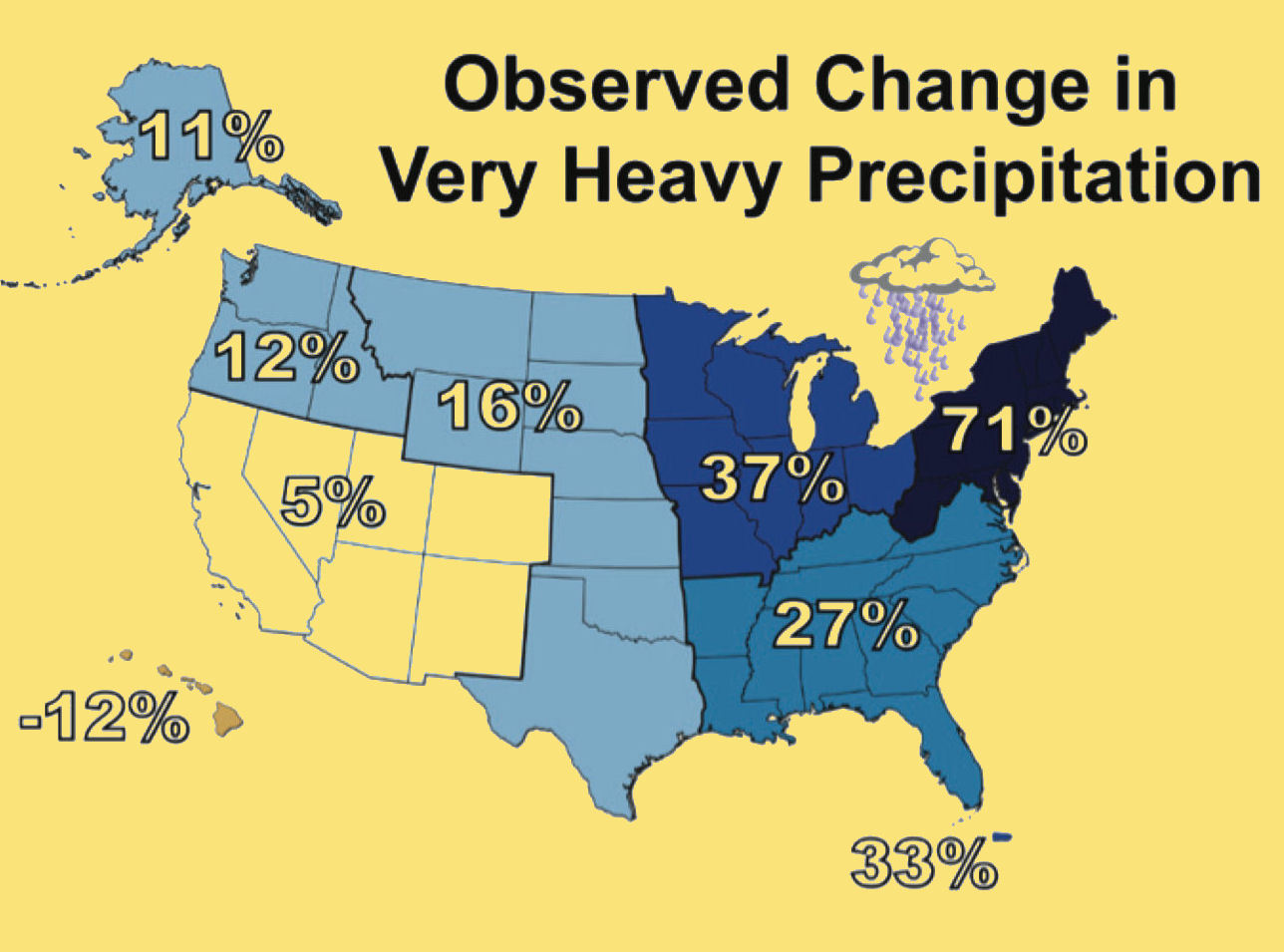
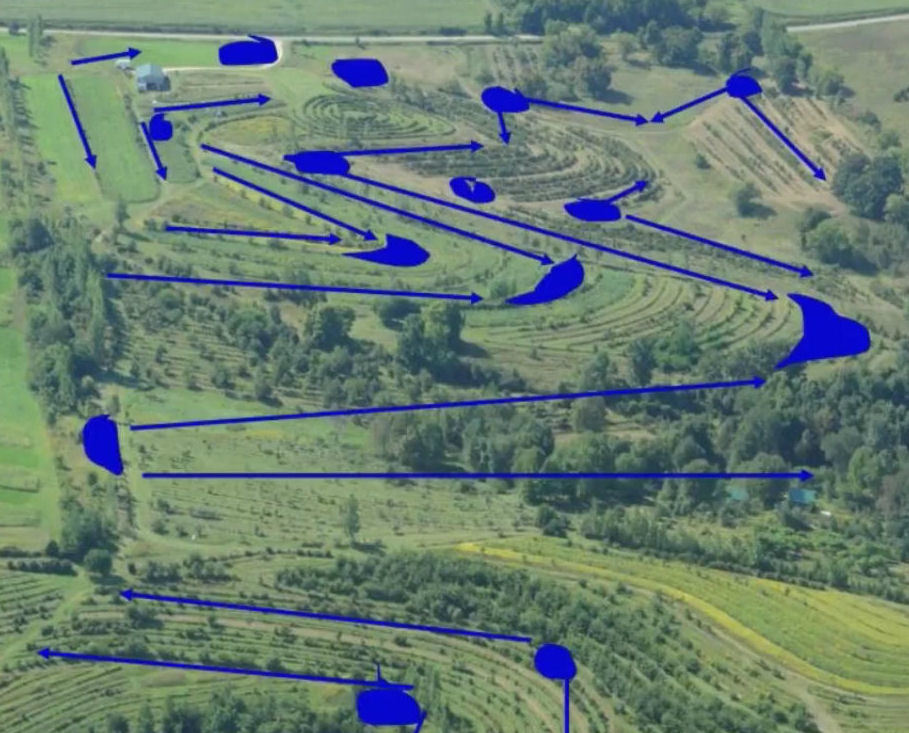
How to shape your landscape to direct water where you want it
How to select tree crops for your site
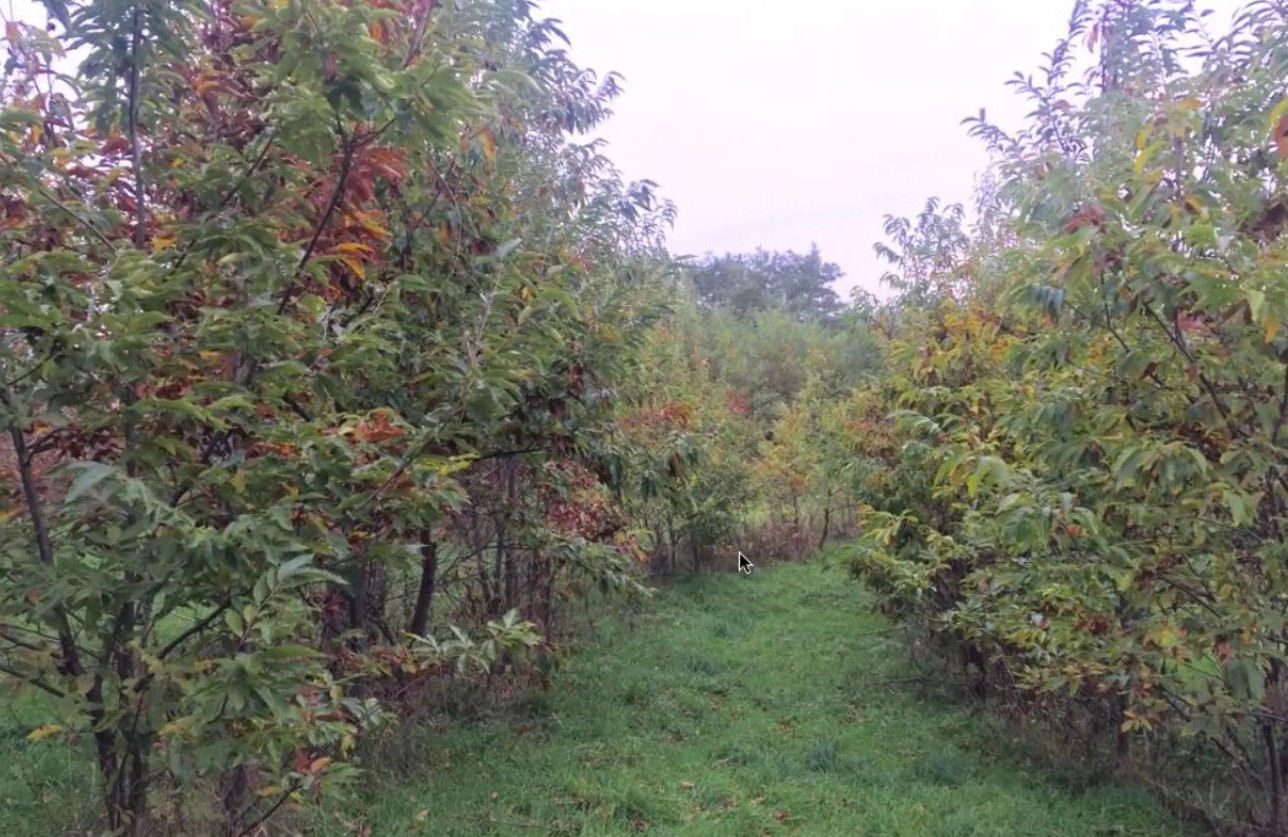
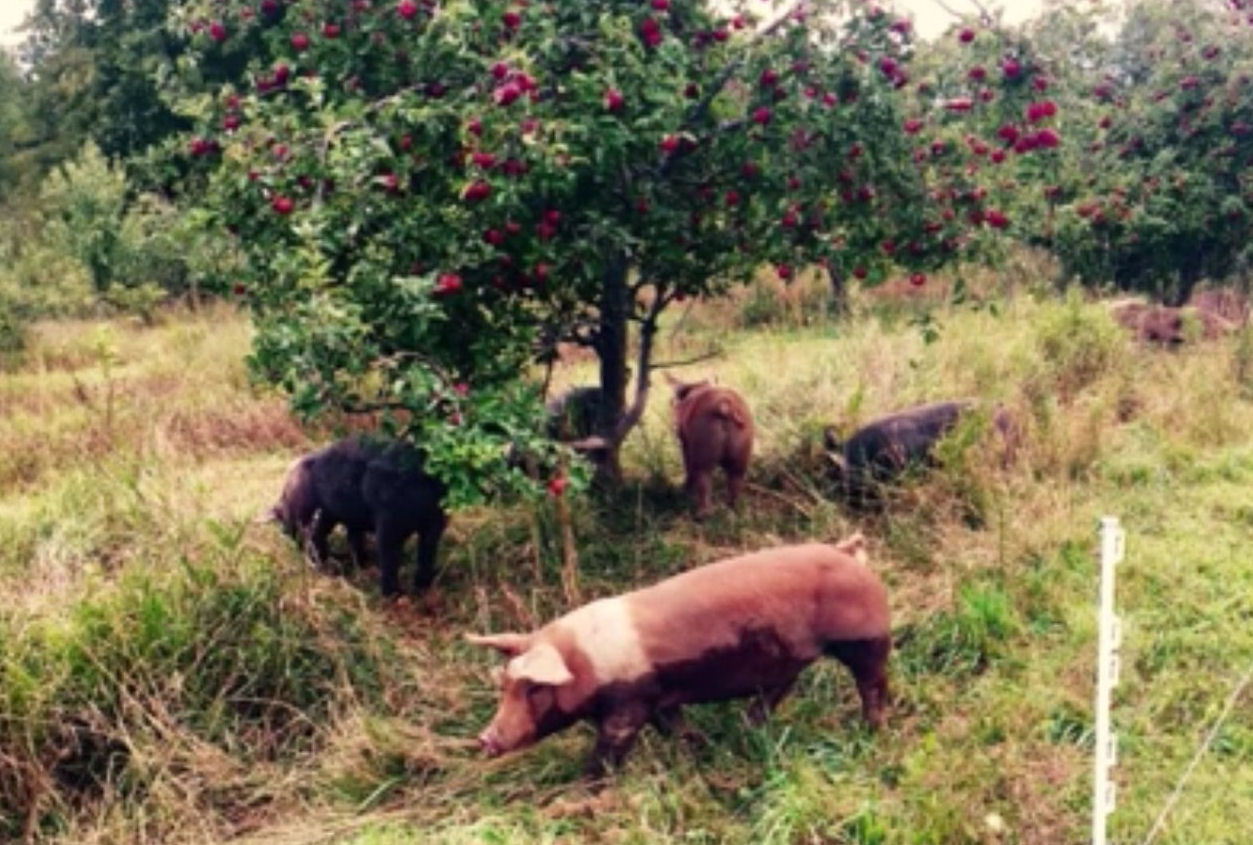
How to integrate livestock into your silvopasture system
How to cash flow until your tree crops start to produce
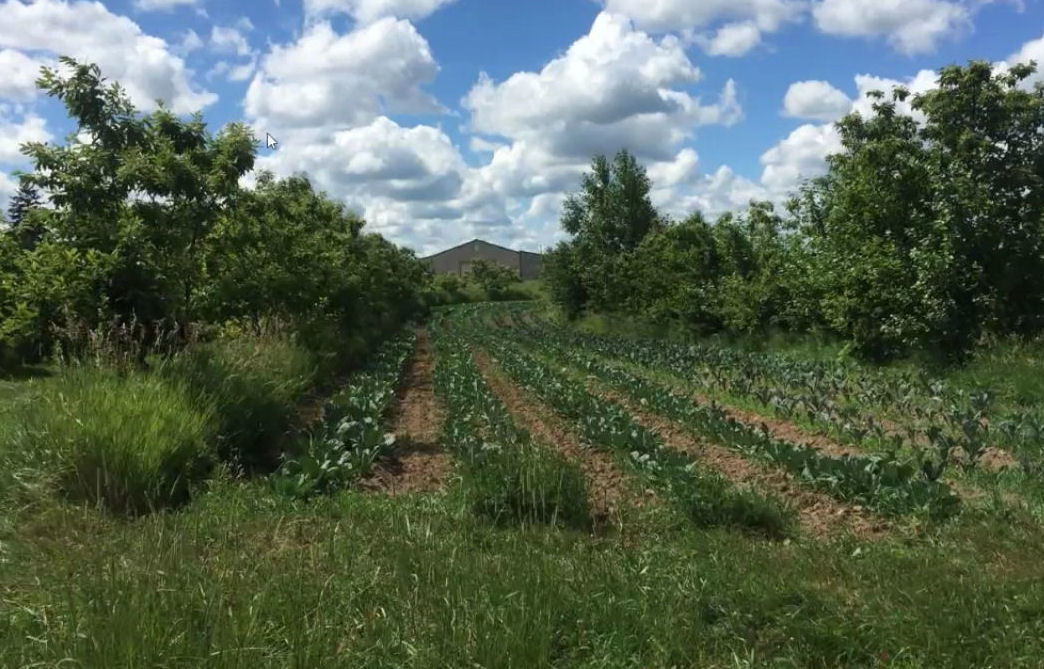
Our Setting
EcoVillage at Ithaca is a cohousing community located on 175 acres two miles west of Ithaca, New York. The one hundred dwellings and associated infrastructure are clustered in three neighborhoods on 30 acres in the center of the land, leaving 145 acres of open space on the periphery. About 50 acres that are heavily wooded and 40 that are shrubby have been set aside for wildlife and recreational use. Three small farms occupy 25 acres, with 30 more acres reserved for future agricultural projects.
Some of the reserved land was so overgrown with honeysuckle, multiflora rose, and autumn olive that a forest chipper was brought in last fall to transform it from this:
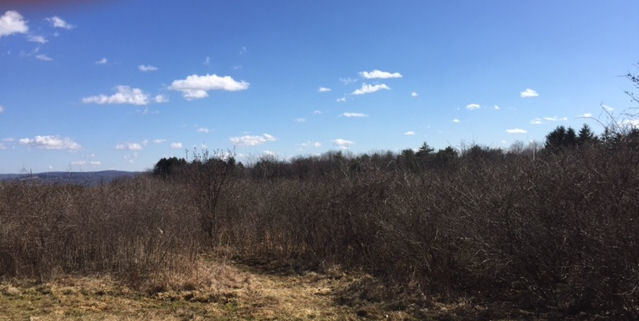
to a field of stubble, like this:
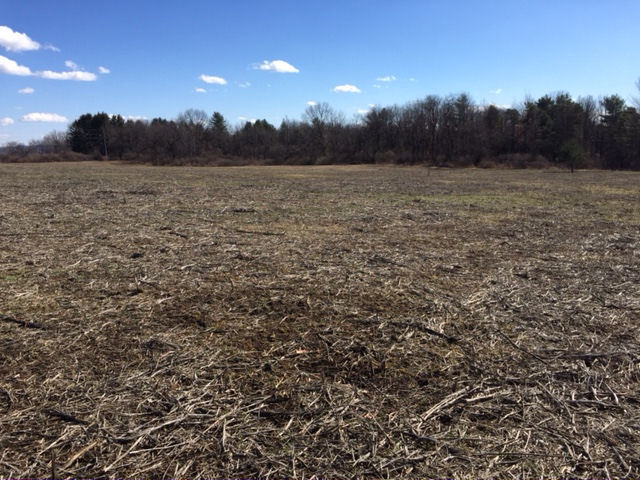
Mark Shepard visited in October to do the preliminary planning for a comprehensive water management system for the property, a portion of which will be installed during the workshop. After the terraces, swales, and berms are constructed on the area that was forest chipped, several thousand trees will be planted using a tree planter like the one pictured below.
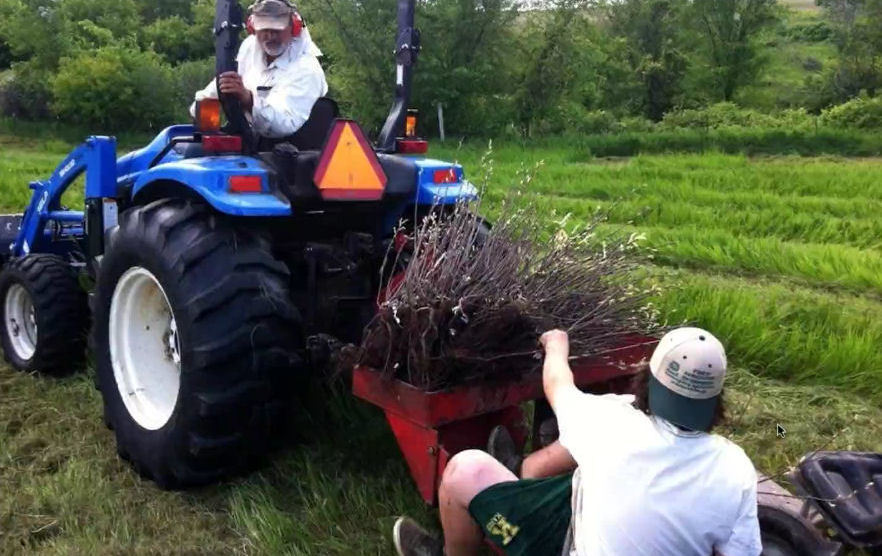
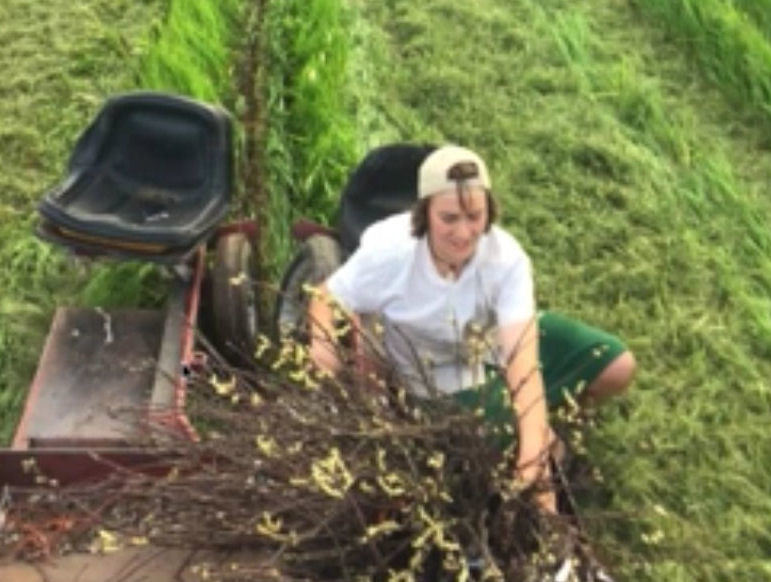
The main planting will be of butternuts, chestnuts, and hazelnuts along the contours. But there will also be an experimental planting of trees and shrubs to form a living fence.
With adequate moisture this summer, our plantings may look as promising at the end of this summer as the trees planted last year in April at Back the Lane farm in Stephentown, NY did just four months later.
.
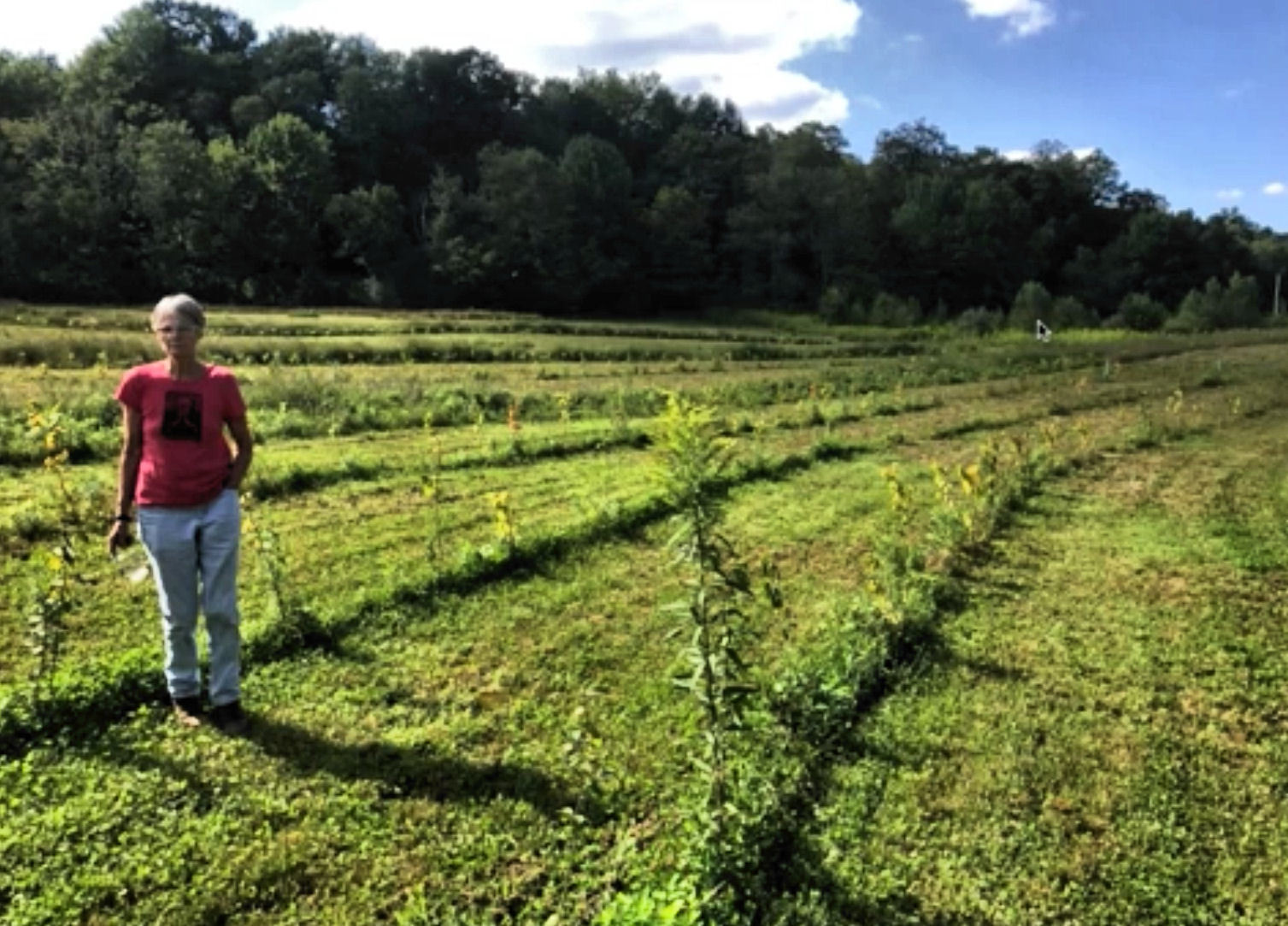
What other workshop
participants say─
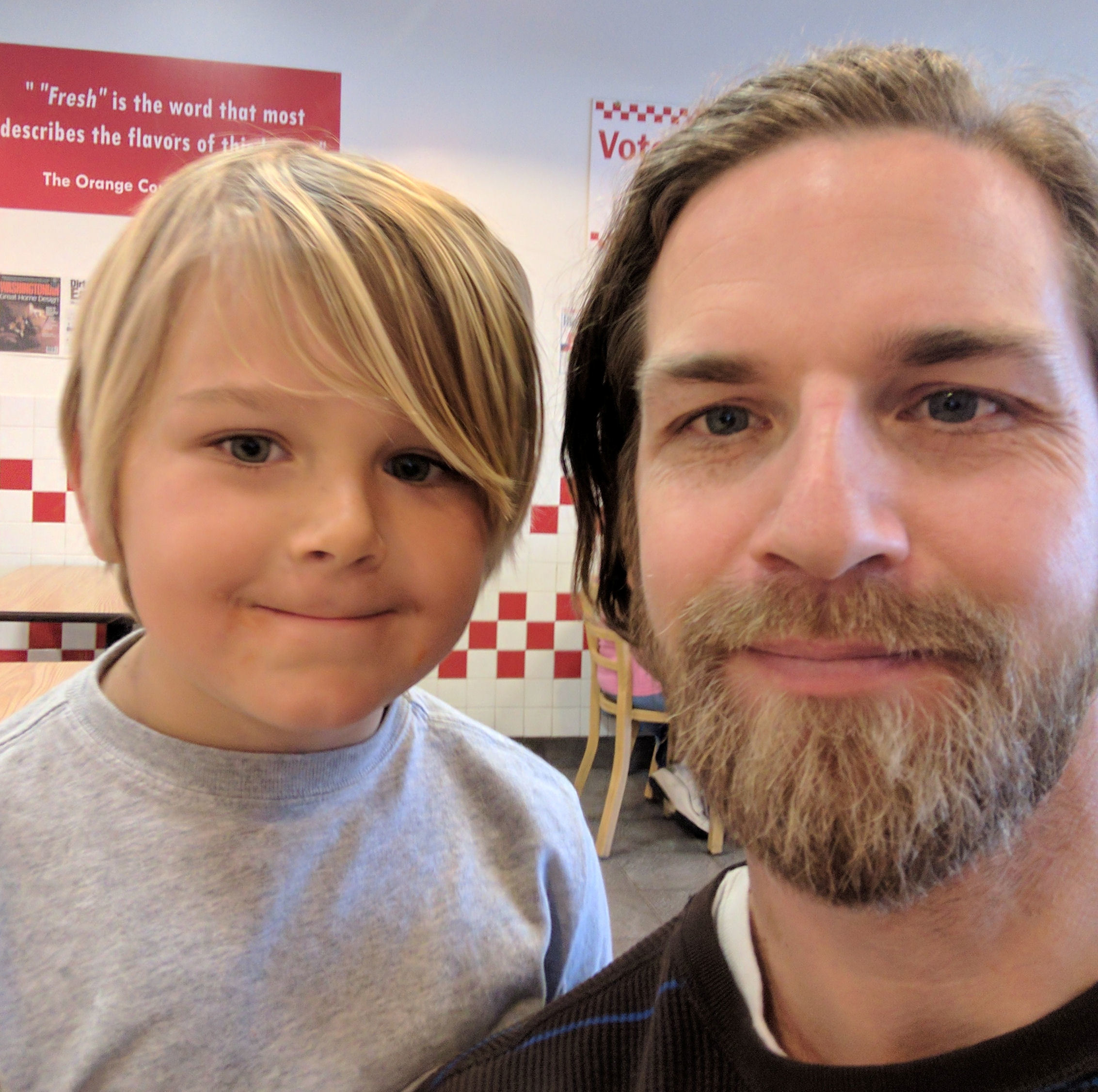
Mark's visit was a complete whirlwind--he is an inexhaustible resource of passion and knowledge about regenerative agriculture. Not only did we deeply discuss the theory behind it, but we got as practical as you can get, learning how exactly to lay out a keyline system using the necessary equipment, how to properly use the tree planter, etc. I went from having a good idea of how keyline design works in theory to being able to use the laser level and do the layout for a broadacre design. Mark was fully accessible to all who attended to address every question they had.
Ben Hart, Back the Lane Farm, Stephentown, NY
Workshop Host at Back the Lane Farm, April 2017
I had read Restoration Agriculture, but I didn't have any idea where to begin in creating my own Restoration Agriculture system until I attended Mark's workshop in April, 2017. Over the course of the three days of the workshop, I could finally see my way forward. Mark laid out the steps one by one in such detail that I am now off and running.

LISA RIPPERTON, Three Story Farm, Ithaca, NY
Workshop Participant at Back the Lane Farm, April 2017
Schedule
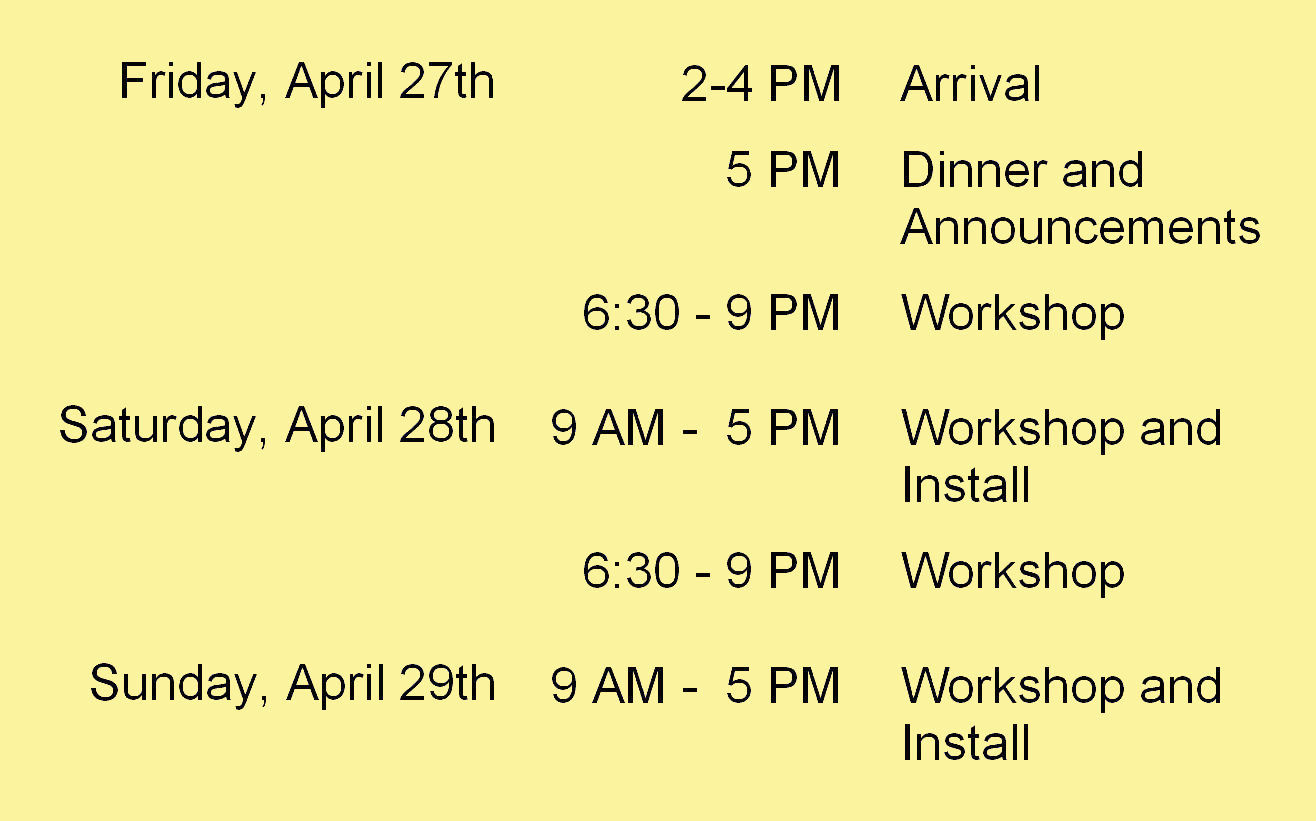
Mark Shepard

While homesteading in Alaska, Mark Shepard received his Permaculture Design Certificate through a correspondence course with Bill Mollison, the founder of the international Permaculture movement, and started developing his ideas for restoration agriculture.
Then he moved with his family to southwest Wisconsin, where he began converting a typical row-crops grain farm into a commercial-scale, perennial agricultural ecosystem using oak savanna, successional brushland, and eastern woodlands as the ecological models. His New Forest Farm is considered by many to be one of the most ambitious sustainable agriculture projects in the United States.
After spending over two decades developing his 106-acre New Forest Farm, Mark now crisscrosses the country and travels the globe helping others to design their own perennial woody-crop systems. As a grower for Organic Valley cooperative since the beginning, he is a big advocate of locally owned cooperative enterprises. His first book, Restoration Agriculture, offers an introduction to his approach, while his second book, now in preparation, focuses on water management. Weekly in-depth training featuring his work at sites around the world is available through the Ecolonomic Action Team.
Mark founded Forest Agriculture Enterprises to grow and distribute genetically superior woody crop seedlings throughout the country. He offers his consulting services through Restoration Agriculture Development.
FAQ
Accommodations
Parking
Directions
Meals
Cost
Weather
Copyright (C) 2018
ecovillage at Ithaca, Inc.
All Rights Reserved